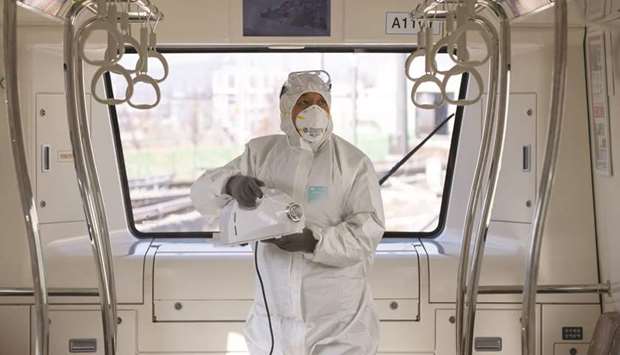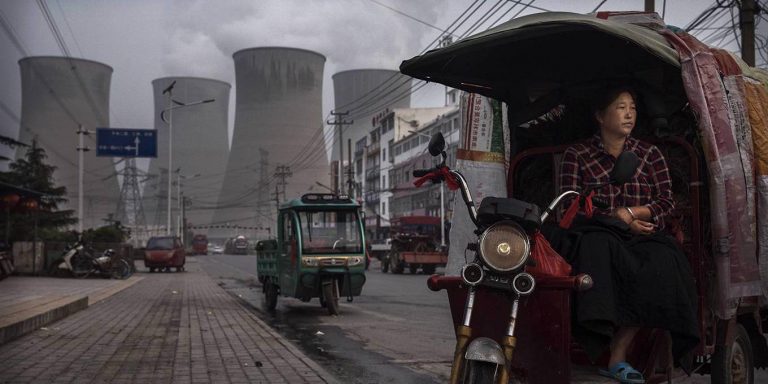Ενα Νέο Βιβλίο Δείχνει τον Δρόμο για την Ειρηνική Επίλυση των Διαφορών Αναφορικά με τα Θαλάσσια Σύνορα

Ενας Οδικός Χάρτης Μπορεί να Βοηθήσει τα Παράκτια Κράτη να Επωφεληθούν του Υποθαλάσσιου Πλούτου
ΟΥΑΣΙΓΚΤΟΝ: Ο ειδικός σε θέματα ενέργειας, Ρούντι Μπαρούντι, στο νέο του βιβλίο αναδεικνύει μηχανισμούς μείωσης της έντασης, οι οποίοι συχνά ξεχνιούνται αλλά μπορούν να βοηθήσουν στην εκμετάλλευση πετρελαίου και φυσικού αερίου αξίας δισεκατομμυρίων δολλαρίων.
Το βιβλίο Διαφωνίες επί των Θαλασσίων Συνόρων στην Ανατολική Μεσόγειο: Μια Πρόταση Επίλυσης διανέμεται από το Ινστιτούτο Μπρούκινγκς και σκιαγραφεί το εκτενές νομικό και διπλωματικό πλαίσιο το οποίο διατίθεται για χώρες με διαφιλονεικούμενα θαλάσσια σύνορα. Ο συγγραφέας Ρούντι Μπαρούντι συζητά την αυξάνουσα επιρροή του Διεθνούς Δικαίου της Θαλάσσης υπό την αιγίδα των Ηνωμένων Εθνών (United Nations Convention on the Law of the Sea – UNCLOS), οι κανόνες του οποίου αποτελούν πια την βάση για την επίλυση όλων, σχεδόν, των διαπραγματεύσεων και συμφωνιών στην θάλασσα. Εξηγεί, επίσης, πως οι πρόσφατες εξελίξεις στον επιστημονικό και τεχνολογικό τομέα – και ειδικά στην χαρτογράφηση ακριβείας – έχουν αυξήσει περαιτέρω την επιρροή των κανόνων του Διεθνούς Δικαίου της Θάλασσας, αφαιρώντας κάθε ενδεχόμενη ασάφεια από οποιαδήποτε διαπραγμάτευση που βασίζεται στους κανόνες του Δικαίου.
Το βιβλίο εστιάζει στην ανατολική Μεσόγειο, όπου οι πρόσφατες ανακαλύψεις υδρογονανθράκων ανέδειξαν το γεγονός ότι τα περισσότερα θαλάσσια σύνορα της περιοχής παραμένουν ακαθόριστα. Η αβεβαιότητα την οποία δημιουργεί αυτή η κατάσταση όχι μόνο καθυστερεί την εκμετάλλευση των πόρων και την διοχέτευση του πλούτου προς όφελος των κοινωνιών, αλλά δημιουργεί και κινδύνους θερμών επεισοδίων και πολέμων. Τέτοιου είδους προβλήματα υπάρχουν σε όλη την Γή. Ο Μπαρούντι σημειώνει, ωστόσο, ότι η δίκαιη επίλυσή τους σε μία περιοχή μπορεί να ενδυναμώσει την εμπιστοσύνη στους πολύπλευρους μηχανισμούς σε κάθε περιοχή.
Σε περίπτωση, σημειώνει, που οι χώρες της ανατολικής Μεσογείου συμφωνούσαν σε μια δίκαιη επίλυση των διαφορών τους με βάση το Διεθνές Δίκαιο, «θα ήταν μια έμπρακτη απόδειξη ότι η μεταπολεμική αρχιτεκτονική συλλογικής ασφάλειας παραμένει όχι μόνο εφικτή αλλά και απαραίτητη… θα απεδείκνυε σε όλον τον κόσμο ότι κανένα εμπόδιο δεν είναι τόσο μεγάλο και καμμία ιστορική εχθρότητα τόσο βαθιά ριζωμένη ώστε να μην υπερσκελίζεται από τον βασικό κανόνα στον οποίο συναίνεσαν όλα τα μέλη των Ηνωμένων Εθνών με την συμμετοχή τους σε αυτόν – την ευθύνη να επιλύουν τις διαφορές τους χωρίς την χρήση ή την απειλή βίας.»
Το βιβλίο μας υπενθυμίζει πως υπάρχουν μοχλοί οι οποίοι μπορούν να αμβλύνουν τις διπλωματικές ανισότητες, και αυτό είναι ιδιαίτερα χρήσιμο σε μια εποχή όπου η όλη ιδέα της πολυπλευρικής προσέγγισης βάλλεται από τις ίδιες χώρες οι οποίες την δημιούργησαν. Ο τρόπος γραφής του βιβλίου ζωντανεύει ένα θεματικό πλέγμα ιστορίας, γεωγραφίας, δικαίου και χαρτογραφίας, καθιστώντας τα θέματα αυτά προσιτά στο ευρύ κοινό στο οποίο απευθύνεται, καθώς και σε πολιτικούς και διπλωμάτες.
Ο Μπαρούντι εργάζεται εδώ και τέσσερις δεκαετίες στον ενεργειακό τομέα. Ανάμεσα στις πολυεθνικές εταιρείες, κυβερνήσεις και διεθνείς θεσμούς που έχει συμβουλέψει στο διάστημα αυτό συγκαταλέγονται τα Ηνωμένα Εθνη, η Ευρωπαϊκή Επιτροπή, το Διεθνές Νομισματικό Ταμείο και η Παγκόσμια Τράπεζα. Οι εξειδικευμένες γνώσεις του βρίσκονται στους τομείς του πετρελαίου και φυσικού αερίου, τα πετροχημικά, τον ηλεκτρισμό, την ενεργειακή ασφάλεια και την μεταρρύθμιση του ενεργειακού τομέα για να αντιμετωπίσει περιβαλλοντικά ζητήματα, την αγορά του άνθρακα, τις ιδιωτικοποιήσεις, και τις υποδομές. Είναι Διευθύνων Σύμβουλος της ανεξάρτητης συμβουλευτικής εταιρείας Qatar Energy and Environment Holding, με έδρα την Ντόχα του Κατάρ.
Το βιβλίο αυτό είναι απόσταγμα πολυετούς προσωπικής έρευνας, ανάλυσης και υπεράσπισης θέσεων του Μπαρούντι. Την επιμέλεια του κειμένου ανέλαβε η Debra L. Cagan, (Distinguished Energy Fellow, Transatlantic Leadership Network) και ο Sasha Toperich (Senior Executive Vice President, Transatlantic Leadership Network).
Το βιβλίο Διαφωνίες επί των Θαλασσίων Συνόρων στην Ανατολική Μεσόγειο: Μια Πρόταση Επίλυσης εκδίδεται από το Transatlantic Leadership Network (TLN), μια ένωση δικηγόρων, παικτών του ιδιωτικού τομέα και αναλυτών οι οποίοι στοχεύουν στον διαρκή εκσυγχρονισμό των σχέσεων Ηνωμένων Πολιτειών και Ευρωπαϊκής Ενωσης. Η αρχική μορφή του βιβλίου ήταν ηλεκτρονική. Τώρα διανέμεται από τις Εκδόσεις του Ινστιτιούτου Μπρούκινγκς, που ιδρύθηκαν το 1916 για την έκδοση ερευνών του Ινστιτούτου, το οποίο θεωρείται από πολλούς ως το πιο αξιοσέβαστο ινστιτιύτο έρευνας των ΗΠΑ.
Πολλοί εξειδικευμένοι παρατηρητές πλέκουν το εγκώμιο του βιβλίου. Παραθέτουμε λίγα αποσπάσματα:
Douglas Hengel, Professional Lecturer in Energy, Resources and Environment Program, Johns Hopkins University School of Advanced International Studies, Senior Fellow at German Marshall Fund of the United States, and former State Department official: “Μέσα από αυτό το στοχαστικό και γλαφυρό βιβλίο, ο Ρούντι Μπαρούντι μας δίνει ένα πλαίσιο… το οποίο μας δείχνει τον δρόμο προς μια δίκαιη και ειρηνική λύση… οι χώρες της περιοχής, καθώς και η Ευρωπαϊκή Ενωση και οι Ηνωμένες Πολιτείες, θα έπρεπε να ασπαστούν την προσέγγιση του Μπαρούντι.
Andrew Novo, Associate Professor of Strategic Studies, National Defense University: “… Ενα καλά ισορροπημένο, καινοτόμο και θετικό μήνυμα το οποίο μπορεί να βοηθήσει πολλά θέματα να προοδεύσουν που δεν φαίνονται να επιδέχονται επίλυσης. Χρσιμοποιώντας το Διεθνές Δίκαιο, γεω-στοιχεία υψηλής ακρίβειας και μια ισχυρή οικονομική λογική, ο Μπαρούντι προσφέρει ένα πειστικό επιχείρημα υπέρ ενός συμβιβασμού, εφόσον, φυσικά, οι εμπλεκόμενες πλευρές θέλουν να ακούσουν.”









BONN – In the face of climate change, providing reliable supplies of renewable energy to all who need it has become one of the biggest development challenges of our time. Meeting the international community’s commitment to keep global warming below 1.5-2°C, relative to preindustrial levels, will require expanded use of bioenergy, carbon storage and capture, land-based mitigation strategies like reforestation, and other measures.
The problem is that these potential solutions tend to be discussed only at the margins of international policy circles, if at all. And yet experts estimate that the global carbon budget – the amount of additional carbon dioxide we can still emit without triggering potentially catastrophic climate change – will run out in a mere ten years. That means there is an urgent need to ramp up bioenergy and land-based mitigation options. We already have the science to do so, and the longer we delay, the greater the possibility that these methods will no longer be viable.
Renewable energy is the best option for averting the most destructive effects of climate change. For six of the last seven years, the global growth of renewable-energy capacity has outpaced that of non-renewables. But while solar and wind are blazing new trails, they still are not meeting global demand.
A decade ago, bioenergy was seen as the most likely candidate to close or at least reduce the supply gap. But its development has stalled for two major reasons. First, efforts to promote it had negative unintended consequences. The incentives used to scale it up led to the rapid conversion of invaluable virgin land. Tropical forests and other vital ecosystems were transformed into biofuel production zones, creating new threats of food insecurity, water scarcity, biodiversity loss, land degradation, and desertification.
In its Special Report on Climate Change and Land last August, the Intergovernmental Panel on Climate Change showed that scale and context are the two most important factors to consider when assessing the costs and benefits of biofuel production. Large monocultural biofuel farms simply are not viable. But biofuel farms that are appropriately placed and fully integrated with other activities in the landscape can be sustained ecologically.
Equally important is the context in which biofuels are being produced – meaning the type of land being used, the variety of biofuel crops being grown, and the climate-management regimes that are in place. The costs associated with biofuel production are significantly reduced when it occurs on previously degraded land, or on land that has been freed up through improved agriculture or livestock management.
Under the 1.5°C warming scenario, an estimated 700 million hectares of land will be needed for bioenergy feedstocks. There are multiple ways to achieve this level of bioenergy production sustainably. For example, policies to reduce food waste could free up to 140 million additional hectares. And some portion of the two billion hectares of land that have been degraded in past decades could be restored.
The second reason that bioenergy stalled is that it, too, emits carbon. This challenge persists, because the process of carbon capture remains contentious. We simply do not know what long-term effects might follow from capturing carbon and compressing it into hard rock for storage underground. But academic researchers and the private sector are working on innovations to make the technology viable. Compressed carbon, for example, could be used as a building material, which would be a game changer if scaled up to industrial-level use.
Moreover, whereas traditional bioenergy feedstocks such as acacia, sugarcane, sweet sorghum, managed forests, and animal waste pose sustainability challenges, researchers at the University of Oxford are now experimenting with the more water-efficient succulent plants. Again, succulents could be a game changer, particularly for dryland populations who have a lot of arid degraded land suitable for cultivation. Many of these communities desperately need energy, but would struggle to maintain solar and wind facilities, owing to the constant threat posed by dust and sandstorms.
In Garalo commune, Mali, for example, small-scale farmers are using 600 hectares previously allocated to water-guzzling cotton crops to supply jatropha oil to a hybrid power plant. And in Sweden, the total share of biomass used as fuel – most of it sourced from managed forests – reached 47% in 2017, according to Statistics Sweden. Successful models such as these can show us the way forward.
Ultimately, a reliable supply of energy is just as important as an adequate supply of productive land. That will be especially true in the coming decades, when the global population is expected to exceed 9.7 billion people. And yet, if global warming is allowed to reach 3°C, the ensuing climatic effects would make almost all land-based mitigation options useless.
That means we must act now to prevent the loss of vital land resources. We need stronger governance mechanisms to keep food, energy, and environmental needs in balance. Failing to unleash the full potential of the land-based mitigation options that are currently at our disposal would be an unforgiveable failure, imposing severe consequences on people who have contributed the least to climate change.
Bioenergy and land-based mitigation are not silver bullets. But they will buy us some time. As such, they must be part of the broader response to climate change. The next decade may be our last chance to get the land working for everyone.